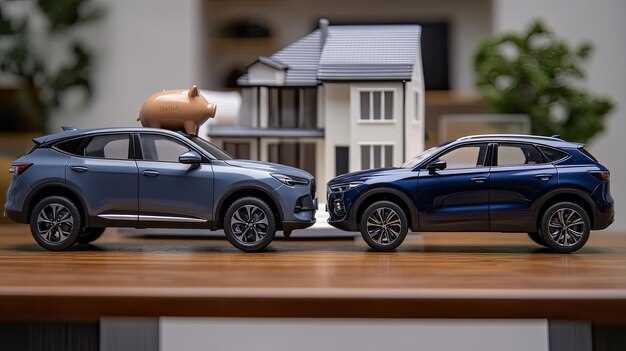
Choosing the right vehicle is a crucial decision that can significantly impact your daily life. When it comes to selecting between a sedan and a hatchback, understanding the nuances of each body style is essential. Both options offer unique characteristics that cater to different needs and preferences, making it important to evaluate how each aligns with your lifestyle.
Sedans are often lauded for their elegant design and superior aerodynamics, providing a smooth driving experience and enhanced fuel efficiency. With their spacious interiors and dedicated trunk space, sedans cater to individuals and families who prioritize comfort on longer journeys. On the other hand, hatchbacks offer versatility and practicality, making them an excellent choice for urban dwellers and those who frequently haul larger items. The rear hatch allows for easy access to the cargo area, combining convenience with functionality.
Ultimately, the decision between a sedan and a hatchback hinges on your specific lifestyle choices. Whether you require the refinement of a sedan for business commutes or the agile versatility of a hatchback for city driving and errands, understanding these differences will guide you toward the best fit for your needs. In this article, we will delve deeper into the advantages and disadvantages of each vehicle type, helping you make an informed choice that complements your lifestyle.
Sedan vs Hatchback: What Suits Your Lifestyle Better

Choosing between a sedan and a hatchback can significantly impact your daily life. Both body styles offer unique advantages and disadvantages that cater to different lifestyles. Here are key factors to consider when determining which car type is better for you.
Space and Accessibility
When it comes to space, sedans generally have a more traditional trunk, while hatchbacks come with a rear door that swings upward, granting access to a larger cargo area.
- Sedan: Ideal for those who prioritize a defined trunk space, suitable for transporting luggage or golf clubs.
- Hatchback: Offers versatile cargo accommodations, making it easier to load bulky items or larger grocery runs.
Performance and Handling

Sedans often come with a focus on performance and smooth handling, catering to those who enjoy a more engaging driving experience.
- Sedan: Typically provides a better ride comfort and stability at higher speeds, making it suitable for long-distance driving.
- Hatchback: Usually lighter and more compact, resulting in nimble handling, which is advantageous for city driving and parking.
Fuel Efficiency
Fuel efficiency can also be a deciding factor in your choice.
- Sedan: Often available with more powerful engine options, which can lead to lower fuel economy in some models.
- Hatchback: Generally offers better fuel efficiency, ideal for budget-conscious drivers navigating urban environments.
Style and Image
Both sedans and hatchbacks have distinct aesthetic appeals.
- Sedan: Conveys a classic and professional image, fitting for business settings.
- Hatchback: Exudes a sporty and youthful vibe, appealing to those who desire a trendy look.
Conclusion
Ultimately, the choice between a sedan and a hatchback depends on your lifestyle, needs, and personal preferences. Consider factors like space requirements, driving experience, fuel efficiency, and style to make an informed decision that best suits your daily life.
Space and Storage: Which Car Type Offers More Utility?
When considering the practicality of a sedan versus a hatchback, space and storage play a crucial role in determining which vehicle better suits your lifestyle. Sedans typically offer a more traditional layout with a separate trunk, providing a designated storage area that is often more spacious compared to the cargo space of hatchbacks. This separation can enhance security for belongings, as the trunk is not visible from the passenger compartment.
In contrast, hatchbacks have a versatile rear design that allows for easier loading and unloading of items, particularly larger or bulkier objects. The rear seats in hatchbacks can usually fold down, expanding the available cargo space significantly. This adaptability can be particularly beneficial for individuals who frequently transport sports equipment, groceries, or other larger items.
Additionally, the rear hatch door of a hatchback makes accessing the cargo area more convenient, especially in tight parking situations. On the other hand, sedans may struggle with limited trunk access if the height of the load is considerable or if items are particularly long.
Ultimately, the choice between a sedan and a hatchback boils down to individual needs. If you prioritize dedicated trunk space for organized storage, a sedan may be the better option. However, if versatility and ease of access are top priorities, a hatchback could offer more utility in daily life.
Fuel Efficiency and Performance: How Do They Compare?
When considering the fuel efficiency and performance of sedans and hatchbacks, several factors come into play, including engine size, weight, and aerodynamics. Hatchbacks typically offer a more compact design, which can lead to better fuel economy in many models. Their lighter weight generally gives them an advantage in urban settings, where stop-and-go traffic can heavily influence fuel consumption.
Sedans, on the other hand, often feature larger engines and more powerful performance options. This can result in a more exhilarating driving experience, especially in higher trim levels. However, this increased power can also come with a trade-off in fuel efficiency. The larger body of sedans may create more wind resistance, which can negatively impact highway mileage.
Hybrid and electric options are becoming increasingly popular in both categories, enhancing fuel efficiency. Many hatchbacks benefit from smaller, more efficient engines, allowing them to excel in terms of gas mileage. Meanwhile, the growing availability of hybrid sedans provides options for those looking for a balance between performance and economy.
In summary, if fuel efficiency is the top priority, hatchbacks often have the edge, particularly in city driving. However, for those who prioritize performance, especially during longer trips or highway driving, sedans may offer the better experience. Ultimately, the choice between the two should align with specific lifestyle needs and driving habits.
Design and Aesthetics: Which Model Aligns with Your Style?
The choice between a sedan and a hatchback often comes down to personal aesthetics and design preferences. Sedans are known for their classic, elongated silhouette which exudes elegance and sophistication. This design often appeals to individuals who prefer a more formal appearance in their vehicle.
In contrast, hatchbacks typically showcase a sportier and more compact form. Their versatile style makes them ideal for those who seek a contemporary look that combines practicality with a youthful edge. The rear hatch design not only enhances accessibility but also gives hatchbacks a unique flair, making them stand out in urban environments.
When considering color options, sedans often come in traditional shades that reflect a professional demeanor, such as black, gray, or navy. Hatchbacks, on the other hand, frequently offer a wider variety of vibrant colors, appealing to drivers who wish to express their individuality and creativity.
Moreover, the interior design of a sedan often focuses on luxury and comfort, featuring high-quality materials and spacious seating. This aspect is crucial for those who value a refined atmosphere while driving. Conversely, hatchbacks typically emphasize a more functional layout, with user-friendly technology and a focus on practicality, appealing to active lifestyles.
Ultimately, the decision between a sedan and a hatchback should be guided by your personal style and how each model aligns with your daily life. Consider what design elements resonate with you and what type of aesthetic complements your personality.



